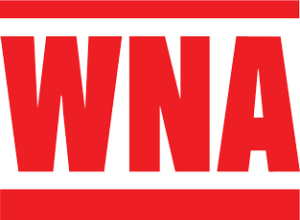By Tony Smithson | Vice President of Printing Operations, Bliss Communications
Winning the World Series must be an incredible feeling. More so than winning the lottery – which must be pretty awesome, too – because it’s the result of a lot of hard work by a lot of people.
On August 29th, when the International Trade Commission announced a negative finding on newsprint tariffs, newspaper publishers felt like they had won the World Series. After the confetti and rounds of congratulations for everyone’s hard work, publishers began looking around for the World Series trophy, which in this case looked like reduced newsprint prices.
But reduced prices were nowhere to be found.

Publishers began asking some very reasonable questions like, “Now that the tariffs are gone, why haven’t newsprint prices gone down?” and “Since producers are getting refunds for what they deposited as tariffs, when do I get my refund?” Regrettably, the answers were not encouraging.
» RELATED: Smithson deciphers Commerce Department’s newsprint tariff decision
» RELATED: Commerce Department revises newsprint tariffs
At the end of September, newsprint prices were 26% higher than they were at that point in 2017. Price increases started in October 2017, and continued nearly every month until July 2018.
After a year of linking preliminary tariffs to price increases, producers are now pointing to a different factor: operating rates.
Operating rate is the percentage of a newsprint mill’s production capacity that is actually being used. According to RISI, an industry group that tracks pulp and paper markets, operating rates above 93% generally support price increases, while operating rates below 90% generally support price decreases.
During the past 12 months, many producers have reported operating rates above 95%, so it almost seems reasonable that it wasn’t the tariffs that drove the prices up. Almost.
A closer look at the factors that drove operating rates paints a slightly different picture.
While North American newsprint consumption has been in steady decline for over a decade, newsprint producers have kept up with the falling demand by shutting down mills or converting them to other products. Producers and analysts point to the fact that for the first time during 2017 overall newsprint production capacity fell faster than demand from publishers. This would have justified some price increases, but arguably not to the extent we have seen.
So what about the tariffs?
Aside from the higher prices that resulted from producers needing additional cash to pay the tariffs first imposed in January, the tariffs had other more complicated effects.
By reducing the profitability of newsprint sold in the United States, the tariffs made exports – paper shipped out of North America – more attractive for producers. One producer noted that their exports rose from 3% annually to 25%, and another shipped 100% of their tons abroad.
Exports leave fewer tons for North American consumption, so in that way, the tariffs drove up the operating rates and prices.
Lower profits caused by tariffs also made other non-newsprint products more appealing to producers. One producer who was particularly hard hit by the tariffs declined to take orders for newsprint in August and September in an apparent attempt to expedite the process of changing over a mill to food packaging paper. Although they are back in the market, they are still committed to converting to food packaging by early 2020. This will mean less newsprint supply, and higher operating rates.
Again, higher operating rates were directly caused by the tariffs. Unfortunately, this particular type of impact will be felt for the long term, even though the tariffs themselves are gone.
However, amid the turmoil, there are a few bright spots.
NORPAC, the company who filed the complaint with the Commerce Department, has restarted an idled machine at their Longview, WA facility, and White Birch Newsprint is in the process of restarting their mill in Ashland, VA. These two should inject enough supply into the market to prevent any price increases for at least the next several months.
But what about those refunds?
Canadian newsprint producers will be receiving refunds of the money they paid for the preliminary tariffs. In early October, David Chavern, President and CEO of News Media Alliance, sent letters to every Canadian producer who will be getting a large refund. He made a very compelling argument as to why the refund should be shared with newspaper publishers, but has reportedly received no response.
The simplest answer to the question of why the producers won’t share their refunds is this: They don’t have to.
Many newsprint producers will explain that they spent more on legal fees than they will receive in tariff refunds, and this is probably true. However, publishers need newsprint to survive, and in a tight market, taking business away from a supplier who doesn’t share their refund isn’t really feasible. Still, industry organizations like the National Newspaper Association and News Media Alliance spent millions of dollars to defeat the tariffs. Even if that doesn’t result in the hoped-for lower prices or refunds, it looks like it will mean a return to market stability, which is ultimately good for both producers and publishers.



